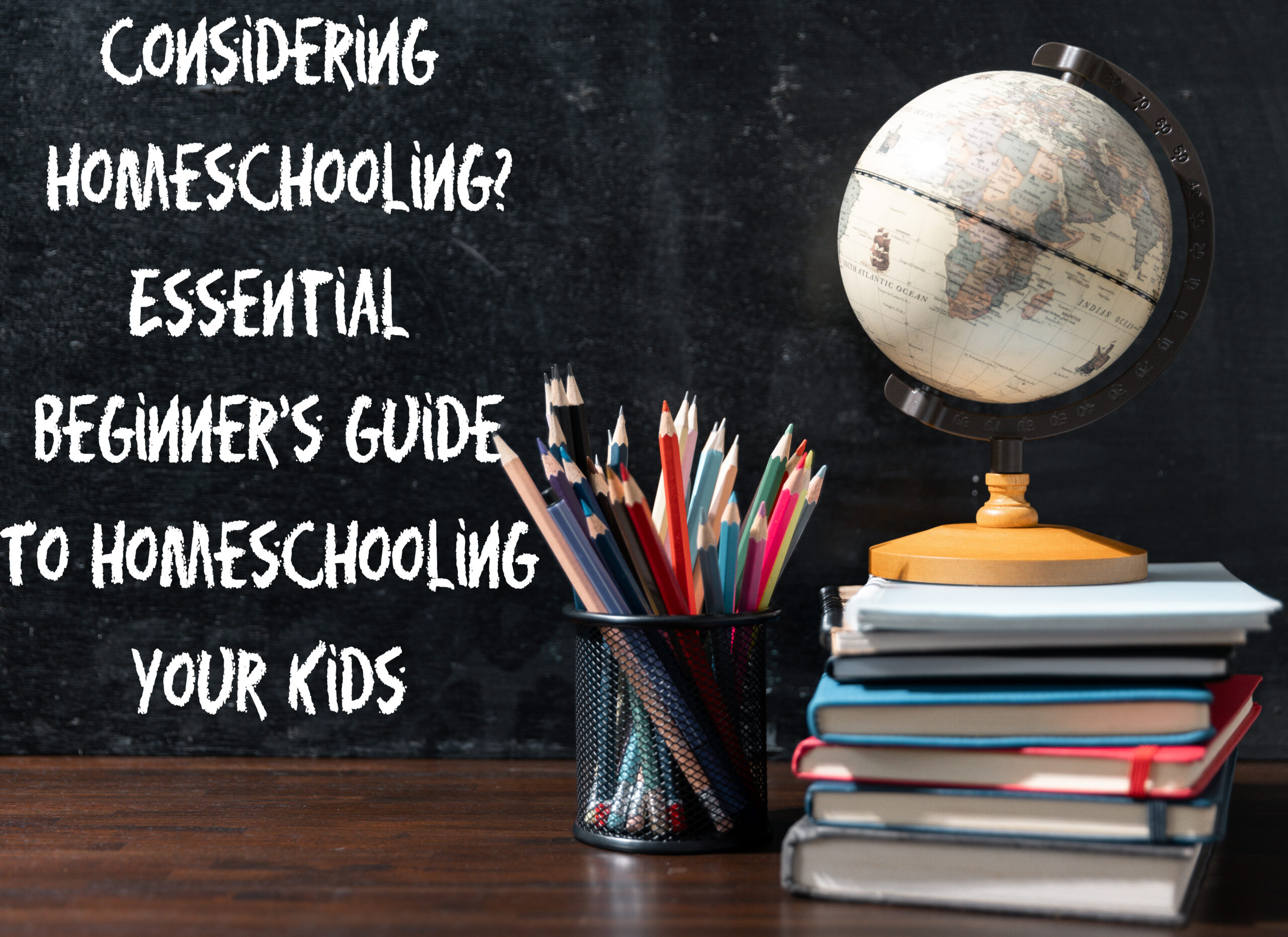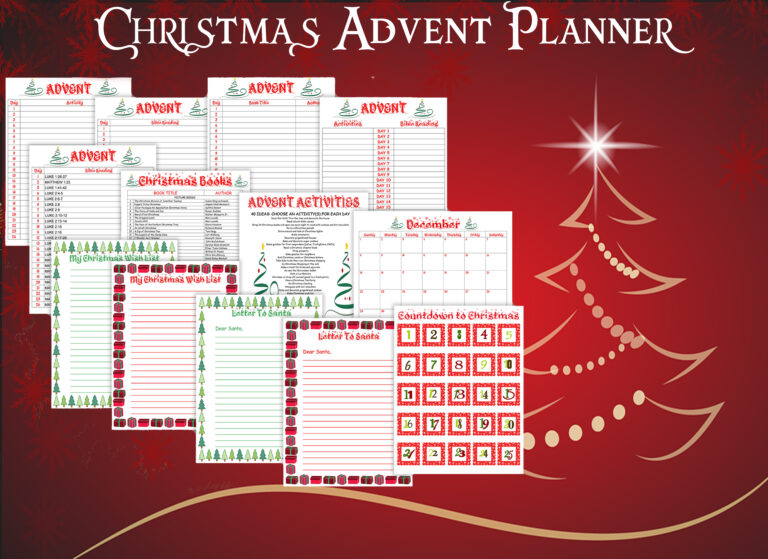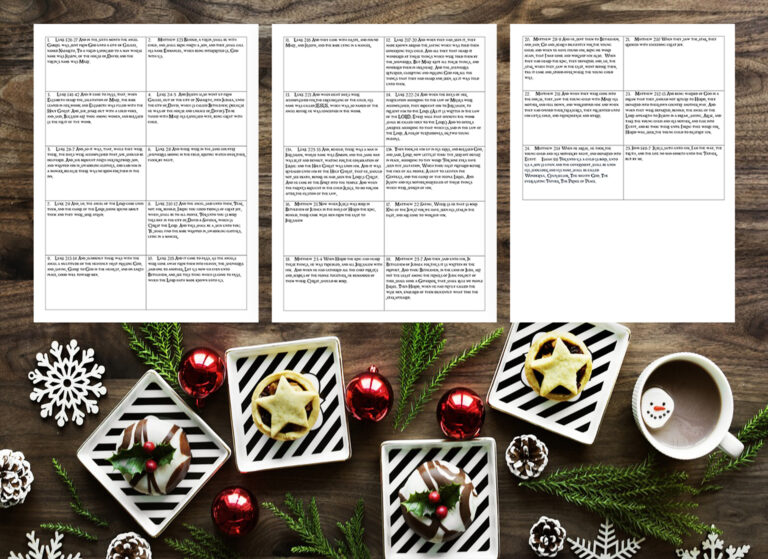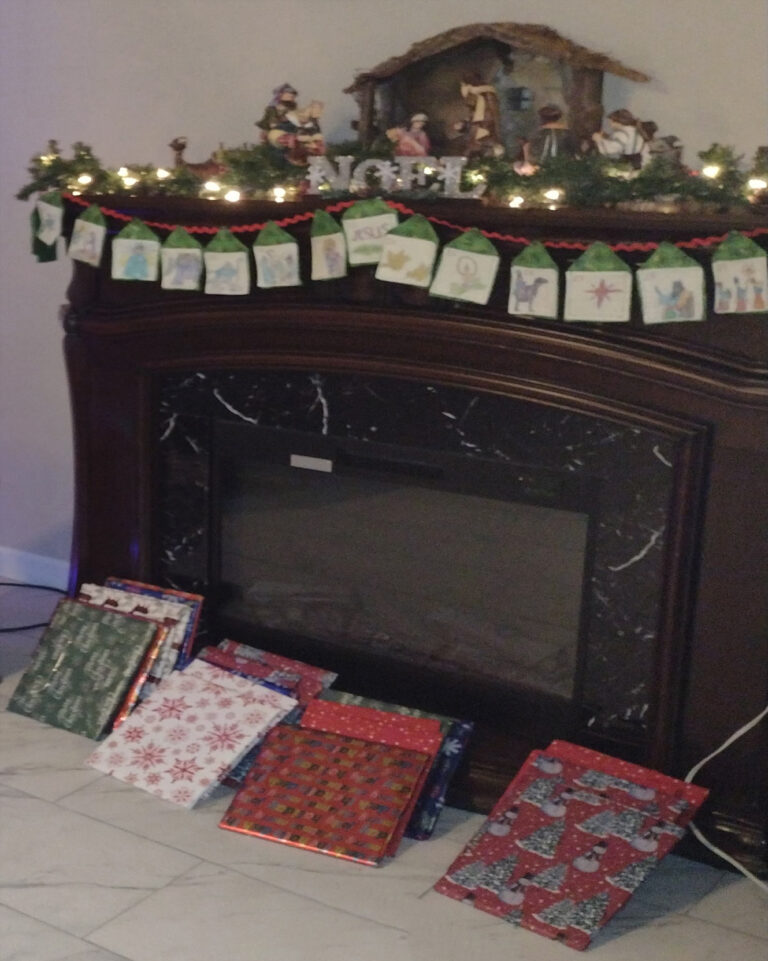Disclosure: This post may contain affiliate links. As an Amazon Associate, I earn from qualifying purchases.
A quick reference guide filled with helpful links to top resources for new homeschooling parents, plus a FREE undated printable homeschool planner to help you feel confident from day one.
Are you considering homeschooling, but don’t know where to begin? You’re not alone. Deciding whether or not to educate your children at home is one of the most important decisions you will make as a parent. You may be overwhelmed with questions and unsure if homeschooling is good fit for your family. Or, perhaps, you’ve made the decision to homeschool your kids, but the process of getting started overwhelms you as you try to sort through all the information out there. Regardless of where you are, this blog post is all you need to guide you in your decision making process or to get started right away. This is not a how to post – there are plenty of those for that. This post is simply a quick reference guide that will provide answers via trusted website links and resources to the most common questions about homeshooling.
Why We Chose To Homeschool
We homeschooled our 4 kids from pre-school until high school graduation, officially beginning in 2005 with our oldest in kindergarten. In 2024, we graduated our youngest child. My husband and I always knew we wanted to homeschool our kids. In fact, we made that decision long before they even arrived! Our main reason was to raise them in the nurture and admonition of the Lord (Ephesians 6:4, Deuteronomy 6:7), and we believed that homeschooling was the best way to do that. We also had some concerns about the education they would receive in public schools and all the challenges that come with it. We remembered our own school experiences and didn’t want our children to face unnecessary difficulties that might turn into baggage they would carry around in their adult lives.
Your reasons for considering homeschooling may or may not be similar to ours, but your questions will probably still be the same. Regardless of the reason you’re thinking of educating your children at home, this post will help you in your decision making process.
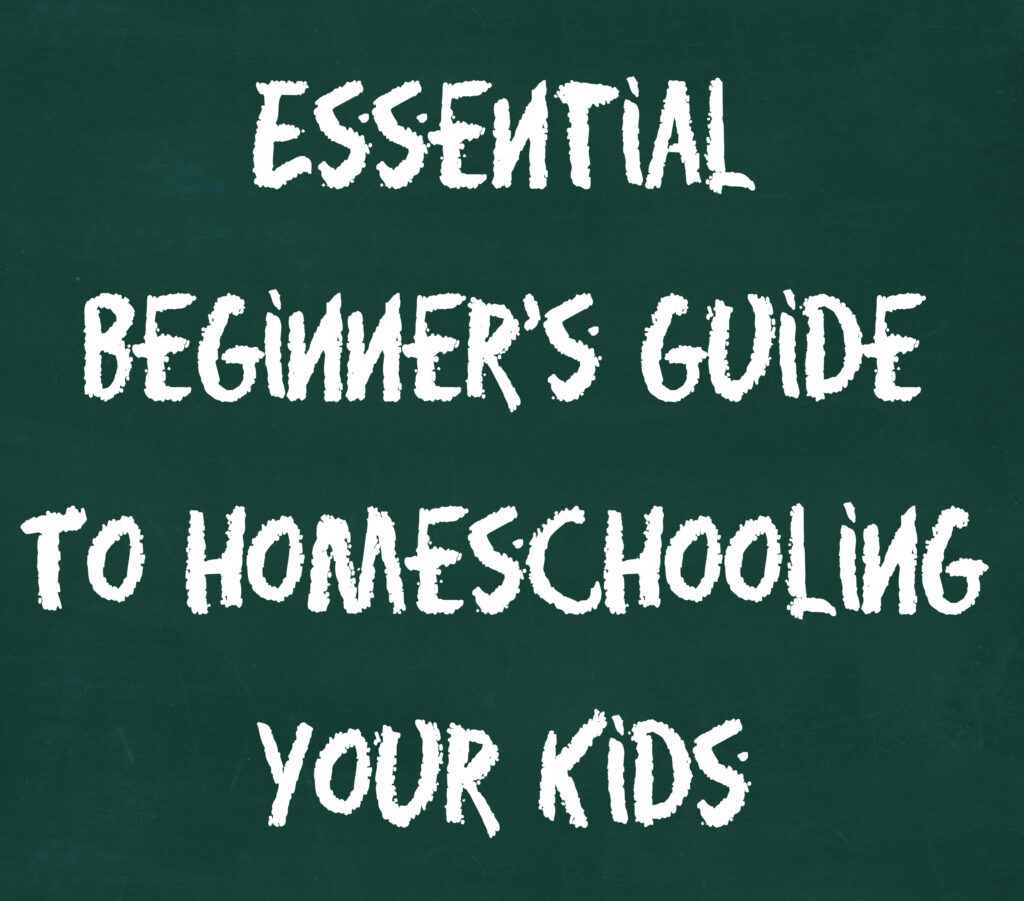
What You’ll Find In This Quick Reference Guide
Some of the information is not directly about homeschooling, but it is more related to the broader homeschool culture. Some of it may not be relevant to your situation or may not fit your family’s lifestyle and goals you have for your children. I encourage you to take what fits, and leave the rest behind. Homeschooling looks very different for each family. That is one of the beauties of homeschooling: you do what is best for your family, and don’t worry about what others are doing. Homeschooling is not a one-size-fits-all.
Different Homeschooling Methods and Approaches
Before choosing a curriculum and planning your homeschool year, you need to know the different homeschooling methods available. Each method has its own philosophy and style, so you need to choose one that aligns most with your own, and the outcomes you want to see from your children’s education.
This article from HomeEducator.com explains all the different homeschooling methods and approaches, from Classical, Charlotte Mason, Unschooling, Montessori, and more. Our family mostly used the Charlotte Mason method, with a little bit of Classical thrown in, as well as some Unschooling (Relaxed) in the high school years.
Recommended Books on Homeschooling Methods
To help deepen your understanding and clarify which approach you want to use, here is a list of some of my favorite books I’ve read and re-read over the years when I was homeschooling. Most of these books are from the Christian perspective, but can apply to secular homeschooling just as well. The links are to Amazon so that you can read summaries and reviews.
- Teaching the Trivium by Harvie and Laurie Bluedorn – This is probably my favorite homeschooling book, even though I use a mostly CM (Charlotte Mason) approach.
- For The Children’s Sake by Susan Schaeffer Macaulay – This book is what made me choose the Charlotte Mason method as my main approach. I love CM’s quote, “Education is an atmosphere, a discipline, a life.”
- A Charlotte Mason Education by Catherine Levison – I like the practical advice and resources in this book.
- The Three R’s by Ruth Beechick – While not exactly CM, it blends beautifully. I referred to this book a lot when my kids were in the early elementary grades.
- The Well Trained Mind: A Guide To Classical Education At Home by Susan Wise Bauer and Jesse Wise – This is my least favorite, but it is very popular with parents using the Classical approach. I found it to be a bit much for our family goals. The Bauer’s are Christians, but this book is not specifically written for or to Christians, so if you’re a secular homeschooler and interested in the Classical method, this is a good starting point.
- How Children Learn by John Holt – I only briefly skimmed this book about Unschooling, but if that is a method you are considering, you should definitely read this one.
Child Training and Discipline – It’s Crucial
One of the most important things that will make your homeschooling a success is obedient, well trained children. It is hard to teach children who are disobedient and undisciplined. Just look at the problem teachers have in public and private schools. Christian homeschoolers generally take godly child training and discipline very seriously. In homeschooling groups you will find as many questions for advice about parenting as you do about academics. This is part of the homeschooling culture. It just goes with it. A popular saying that circulates among homeschoolers is, “If your only reason for homeschooling your children is to teach them at home, then you’ve missed the point of homeschooling.” Homeschooling is a lifestyle that produces siblings who are best friends, parents who are the authority over their homes and they have their children’s heart and respect, the family all bonded to each other not to outside peer influences like a school friend, teacher, coach or a mentor. In order for all of this to happen, there has to be biblical order in the home. So, here is a list of the books we have read. You can do a search for reviews and get a myriad of opinions about some of these books, particularly the first one. But, I”ll tell you, our children were extremely well behaved and very happy (still are), and I can’t tell you the number of times we were complimented when we are out in public, and it is mainly due to the first book on the list. All the books are great and really they all say the same thing just in different ways. They are all biblical, though some disagree about the first one. Of course the best parenting book is The Bible, particularly the book of Proverbs. These others help, though. Most of the authors of these books homeschooled their children as well.
- To Train Up a Child: Child Training for the 21st Century by Mike and Debbie Pearl – There is quite a bit of controversary about these people, even among homeschoolers. The book reviews on Amazon will show you that. You can check them out at their website, No Greater Joy, and come to your own conclusions. We have been greatly blessed by this book and their ministry. If you want first-time obedience from your children, read this book first.
- Shepherding a Child’s Heart by Tedd Tripp – This book had the second most influence on how we raised our kids.
- Child Training Tips: What I Wish I Knew When My Children Were Young by Reb Bradley – Very practical with tips for various behavior scenarios you might encounter with your kids.
- Don’t Make Me Count To Three by Ginger Hubbard – This is a good follow up to Shepherding a Child’s Heart. She gives lots of practical applications. Her website is full of useful information and child training help as well.
- Raising Godly Tomatoes: Loving Parenting With Only Occasional Trips to the Woodshed by L. Elizabeth Krueger – This book is basically just a compilation of the articles on her website. Great information about tomato staking!
- The Mother At Home by John Abbott – Be forewarned, written in the 1800’s, this book is seriously convicting! This book is in the public domain, and there are many published versions on Amazon besides the one I linked to. The copy I read from was a PDF version which you can download for free here. Reading this book will make you cringe and sweat as the author explains a mother’s role, in great detail, and the responsibility God has given us as mothers.
- Keeping Our Children’s Heart:Our Vital Priority by Steve and Teri Maxwell – Excellent
- Homeschooling With A Meek & Quiet Spirit by Teri Maxwell – I consider this book, written especially for mothers, a necessity. I read it before the start of each school year. Their books are also available on their website. Check out their resources page. Managers of Their Homes is the ultimate homeschooling scheduling book, and Managers of Their Chores is a wonderful system for chores. I used both of these books.
Curriculum Choices: How Much Will It Cost
This is the nitty gritty of homeschooling, and where wisdom, research, and restraint, will be much needed. Homeschoolers are notorious for trying just about anything that comes highly recommended. Homeschooling can be virtually free or cost you up to 1500.00 (or more) per child. We averaged spending about $250.00 a year in curriculula and school supplies for all four of our kids. I say average, because there were some years where something didn’t work like we thought it would and we had to find something else. Cost was still pretty negligible since almost everything can be found used on homeschool curriculum websites, Facebook, Ebay, and in your local homeschool stores. We never used a boxed curriculum, and they are can be very expensive. Our finances dictated that we use curricula that was free or inexpensive. Not everyone will have to take into consideration their finances, but a lot of one income families do. Here are are just a few of the most popular curricula for the five man subjects, with options that will fit every budget.
Boxed Curriculum
Many first-timers go this route because everything is laid out for you with text books, and all you need is included, and it’s what most of us are used to. However, costs can add up pretty quickly, so if you are trying to homeschool and not spend a lot of money, this may not a good option for you unless you are able to find used copies. Here is a brief list of the most popular.
- Abeka – Very popular. Used in a lot of Christian schools, but they have options specifically for homechools.
- BJU Press – Good college-prep curriculum known for academic rigor.
- AOP Christian Homeschooling – They have different options or programs of curriculum for you to choose from. I’ve known people who used and loved their LIFEPAC curriculum because of its self paced workbook style.
- Christian Liberty – This company also offers a few options for you. They have a full-service homeschool academy, and they offer independent homeschooling materials under Christian Liberty Press. We enjoyed using their Nature Readers.
- Rod and Staff – Created by Mennonites and this is reflected throughout their curriculum from design to content to grade level. While their curricula only goes up to Grade 10, it’s designed to be so accelerated that finishing Grade 10 is equivalent to completing Grade 12. It’s been said that their Grade 8 English Grammar book is on the collegiate level.
- Christian Light – A workbook format curricula with most courses divided into 10 workbooks called LightUnits.
- A.C.E. School of Tomorrow – This is an accelerated curriculum, self-paced curricula.
Literature-Based Boxed Curriculum
Literature based curricula uses real books instead of text books. For example, instead of having one history text book for Early American History, you’ll read several literature books about the time period to cover the same material in a more engaging and indepth way. Literature-based curriculum can generally be used with all methods except the Traditional or School-At-Home. A great benefit to using this type of curriculum is that you can teach your kids together.
- My Father’s World – Uses a mix of Charlotte Mason and Classical (Hebraic as opposed to Greek) Education
- Sonlight – A mix of Charlotte Mason and Classical Education. They have really nice, fully complete lessons plans all laid out and ready to go.
- Winter Promise – Uses a Charlotte Mason approach
- Five In A Row – Unit Studies for Elementary and Middle Grades
Free Or Low-Cost Curriculums
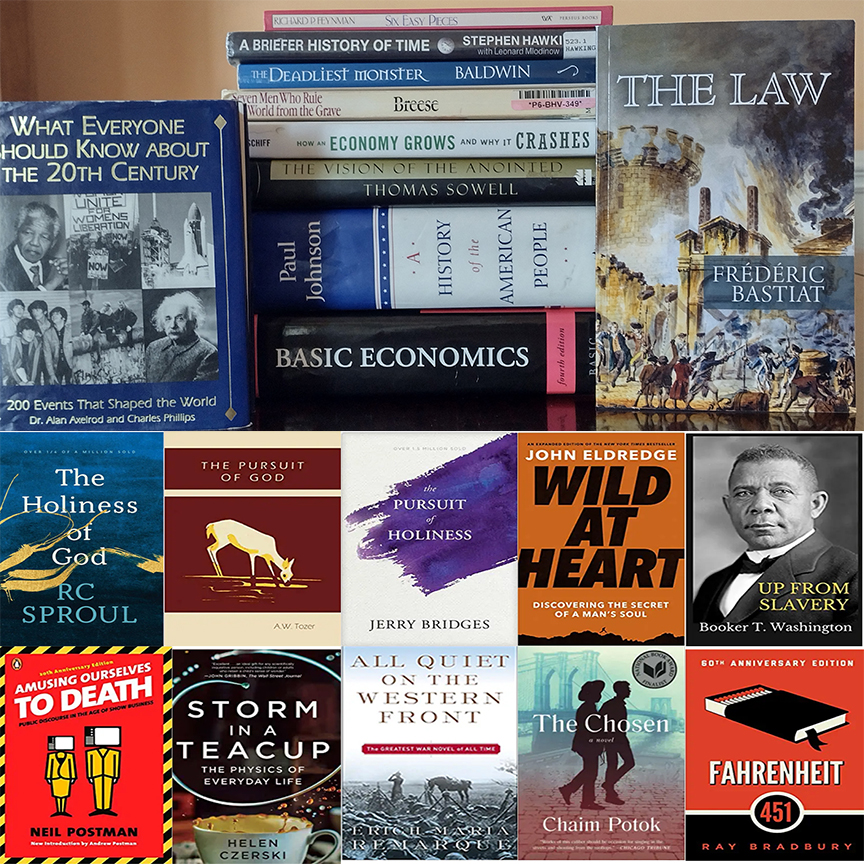
- Ambleside Online – This is a FREE Charlotte Mason curriculum, and what we used. I recommend it to anybody using a CM approach. It is basically a booklist with most of the books found free online. AO does not provide lesson plans, but detailed 36 weeks schedules are included for each year. In order to use this curriculum, you need to have at least a beginning grasp of Charlotte Mason’s philosophy of education. You can find an easy to read version of her books on the website or purchase copies here. There is a New To AO section which is a must read.
- Simply Charlotte Mason – Similar to Ambleside Online, but includes lesson plans and more books you need to purchase. They do have a Create Your Own section where they provide the booklists, and leave the lesson planning up to you.
- Old Fashioned Education – A completely FREE curriculum with all of the books used available to read online. So that all books could be found online, this curriculum includes only books that are found in the public domain. There are lesson plan guides available for purchase.
- The Robinson Curriculum – This is an inexpensive, one-time purchase of a curriculum that includes all 12 years of education, in all the subjects, to be used for all of your children. It is designed for self-teaching and uses mostly real books, along with some science text books and Saxon Math texts. You will have to purchase the Saxon textbooks separately. The curriculum is delivered via CDs and online access. You will need to read through all the information on the website to understand how best to use this curriculum.
- Easy Peasy All-In-One-Homeschool – A completely FREE online curriculum for K-12. There are are worksheets that will need to be completed, and you can print them out for free or purchase them in a workbook.
Reading Curriculum
There are a lot of reading curricula available to help you teach your child to read. Some are easy to use and some are teacher intensive and complicated. If you buy a boxed curriculum a reading program and language arts material will be included, but if you decide to design your own curriculum, you will need separate programs. Of course, what comes with the boxed curriculum may not work for your child, so you would need another option. Here are some favorites that are affordable, effective, and popular among homeschoolers and even some public/private schools.
- Teach Your Child to Read in 100 Easy Lessons – This is not a complete reading program, but once finished your kids will be reading around a second grade level. I used this with all my kids. It worked like a charm for all of them. I think I only ever went through the whole book with one of my kids. I usually stopped around lesson 70 and just started them on beginning readers from the library. To complete their reading instruction to fluency, I followed up this book with the next book in this list.
- Alpha-Phonics: A Primer for Beginning Readers – I used this to complete my kid’s reading instruction. Once we were done with this book, they could read anything.
- Writing Road To Reading – This is very thorough reading program, teacher intensive, and used in some public and private schools.
- The Ordinary Parent’s Guide to Teaching Reading – This is a popular choice for Classical homeschoolers from The Well Trained Mind authors. It is teacher intensive.
- Spell To Read And Write – Popular but teacher intensive. Similar to Writing Road To Reading.
- DonPotter.Net – This website is an amazing resource by a Christian private school teacher. He has a lot of links to free phonics, spelling, and math programs that were very effective years ago and are still just as good. His website is a treasure for anybody that needs free alternatives or just looking for something different.
Language Arts Curriculum
Language Arts (English in high school) covers reading, writing, spelling, grammar, vocabulary, literature, and composition. You can use just one curriculum in each grade that is comprehensive and includes every skill, or you can use a separate curriculum for each one. Or, you can teach these skills without using any formal curriculum. There are a lot of options, from very teacher intensive to independent learning by the student. Depending on your chosen method to homeschool, you may not even need or want to use a formal curriculum. Whenever we used one, it was usually more of a guide. Here are some of the more popular comprehensive programs.
- Learning Language Arts Through Literature – Comprehensive, integrates all skills, from elementary through high school. Teacher intensive
- Essentials In Writing – Writing and Literature curriculum that covers elementary through high school. Not teacher intensive.
- Shurley English – You have the option of print or digital materials, student-centered learning or teacher-led.
- Grammar Land – First published in 1878, this book teaches the parts of speech as people living in their own little world. I read it aloud to all my kids, which we all enjoyed. This, and Schoolhouse Rock videos are pretty much the only way I covered the parts of speech.
History and Curriculum
There are many curricula that exist for history and science that are not part of a boxed curriculum. Some years, we supplemented our main curriculum(Ambleside Online) with textbooks for history and science as spine texts. These are all popular choice and can be adapted to whatever method you will be using. These can be used to teach multiple grades/ages together.
History/Social Studies
- The Mystery of History – I used this for a couple of years. It has lots of ideas for assignments and projects with each chapter you can choose from to fit all grades.
- History Revealed – We used this for Ancient History. Diana Waring makes history come alive and very exciting! There are several packages to choose from, but make sure whatever you purchase, you get the CDs! Even if you don’t want to use this curriculum, I would highly suggest the CDs. They are great just by themselves!
- TruthQuest History – Very popular
- Tapestry of Grace – Uses a combination of the Classical and Charlotte Mason methods, and caters to the different ways students learn – auditory, visual, and kinesthetic.
- Beautiful Feet Books – This is a Charlotte Mason curriculum that utilized living books and teacher guides. I used their Early American History curriculum as a supplement.
Science
- Apologia – This is the most science curriculum. This is a young earth creation based science curriculum. They have elementary through high school level. We used all of the elementary level books written by Jeannie Fulbright. They are wonderful! We also used the high school level texts for General Science (7th/8th grade), Physical Science, Biology, Chemistry, and Physics. Apologia textbooks are written to the student, so this science can be totally student independent or teacher led as often is the case when used in Co-ops.
- Real Science 4 Kids – Intelligent design is assumed. I tried this one year, and though we found it engaging, I decided not to use it.
- Noeo Science – Living Books and Instructor Guides make up this curriculum. Some of the books used are Christian and some are from an evolution viewpoint, and this is noted in the Instructor Guide but without commentary. This would be a good option for secular homeschoolers.
Math Curriculum
Here are a few of the most popular curricula for Math that is not part of a boxed curriculum, though some of the boxed curriculum may actually use one of these texts for their math. Math can be taught informally, without a textbook, in the first three grades. For an interesting read, check out this article about an experiment of delayed formal math.
- Saxon – Extremely popular. We used this for a couple of years. Some use it as a self-teaching course, and others as teacher led. Saxon is used in public and private schools, but they have versions for homeschools. These math books are easy to find used.
- Math U See – A very popular hands-on curriculum. I used to see this mostly recommended for elementary grades, but the curriculum goes all the way to Calculus.
- Making Math Meaningful – This is a hands – on program using math manipulatives. It’s a slow paced curriculum, but thorough and teacher intensive. It is scripted for the parent which makes it easier to teach. The author explains the concepts so well. It teaches the why of math, not just how to solve the problems. I used this in kindergarten through second grade, before switching to Saxon.
- Singapore Math – This curriculum teaches Math the way it is taught in Singapore. It is accelerated and popular worldwide.
- Teaching Textbooks – Popular for high school level. I used this with two of my kids for Algebra, Geometry, and Algebra 2. It is taught, via an app installed on your pc, directly to the student, so no parent involvement is necessary. All work is done in the app, but print copies of the textbook optional. Parents will have a separate log-in to check their student’s progress and grades.
- CTC Math – We switched to this curriculum after using Saxon for a few years. I liked this curriculum because for one price yearly or a monthly subscription, you get access to all levels in all grades for all of your children. Lessons are taught online directly to the student, with interactive questions and worksheets. Parents will have access to everything and can schedule levels and lessons to be taught for each child.
- MEP Math – This is a completely free program you can access online. It is British, but a lot of American families use it.
Helpful Homeschooling Resources And Websites
Here are some links to check out for more general homeschool information and curriculum, where to find used curriculum, legal help, and more!
- National Home Education Research Institute (NHERI) – All the research, facts, and statistics about homeschooling you will need. This is a great resource to have when trying to convince family and friends about the validity and benefits of homeschooling your children.
- Homeschool Legal Defense Association (HSLDA) – Homeschooling advocates providing legal representation for homeschoolers, plus a wealth of information about every aspect of home education. This is the best place to go to understand the homeschool laws in your state. We were members while we homeschooled, but thankfully never had a need for legal services.
- Homeschool World – This website has many articles with tips, advice, and encouragement for home educators. They publish the popular magazine, Practical Homeschooling.
- The Old Schoolhouse: The Trade Magazine For Homeschool Families – A free digital quarterly magazine for Christian homeschoolers. We subscribed to this magazine. They also have a store where you can purchase various homeschool resources.
- Cathy Duffy Reviews – A review of all homeschool curricula that is available. A highly recommended source. I always checked her reviews before purchasing any curriculum.
- Rainbow Resource – A one-stop shopping website where you can purchase most homeschool curriculums. Their prices are reasonable.
- Homeschool Classifieds – A used curriculum website. You can buy and sell your curriculum here with other homeschoolers. I bought a lot of curriculum on this site, and even sold a few things. This is done at your own risk, but I never had any problem with any transaction. When I needed to buy something, I always checked here first.
Testing Services
I live in a state that doesn’t require testing, and I didn’t feel the need to, except once for my oldest in the 8th grade. You may live in a state where testing your child is required. Depending on the laws, the testing may have to be proctored or the parent can do it all themselves. Here are some choices for you to check out.
- Seton Testing Services – They offer all of the popular homeschooler options – IOWA, Stanford, and CAT tests – as well as a few others.
- Academic Excellence – They offer CAT tests. This is what I used with my son. I found their prices more reasonable for what I needed.
- Hewitt Learning – They offer the P.A.S.S. ((Personalized Achievement Summary System) standardized test for grades 3-8. This test was specifically designed for homeschoolers.
- BJU Press Homeschool – If your children need to take proctored tests, this is a good option.
- College Prep Genius – Not a testing service, but a test preparation service for SAT/PSAT, ACT, and CLT. I heard the author say in an interview that this prep would also work for college placement tests, like the ACCUPLACER. She teaches that these are logic tests, not a test of academics, and that there is a strategy to taking these tests and getting high scores.
Informative And Inspirational Videos
Here are a few interesting, informative, and entertaining videos not directly about homeschool, but are some of the reasons people decide to homeschool.
Do Skills Kill Creativity? – Very interesting, but also quite entertaining. I would watch this at the beginning of every new school year.
Animal School – A thoughtful and eye-opening video about school’s expectations of students and how they are taught.
Not On The Test – A song about teaching to the tests.
Dealing With Family And Friends
You may have issues with your family and friends when you decide to homeschool. We certainly did, but by the time our children were through the elementary grades, all (or at least most – you can’t please everybody) the naysaying family and friends were on board. They saw the difference. My sister even wrote a very insightful college paper about homeschooling, based on questions she had me answer for her research. I think it could be a great resource to share with anyone who might disapprove or question your decision to homeschool because they don’t know much about it. And, trust me, the general population knows very little about homeschooling. You can download a PDF copy here.
Ready To Begin – Get Your Free Homeschool Planner
When you’re just beginning your homeschooling journey, or if you are planning your next year, our FREE undated printable planner is the right tool for the job! This is a simple and straightforward planner that will help you plan, organize, schedule, and track your day. If your state’s homeschool laws require you to keep a record of your homeschooling, using this planner will help you meet that requirement. This lesson plan book is undated, so you can start using it anytime during the year! Download, print out, and put in a 3 ring binder or have spiral bound at your local office supply store. Click the image or download button. A paperback version is available on Amazon here. 2025-2026 dated versions are also available. Get a printable version here on Etsy or the paperback version here on Amazon.

If you would prefer a much simpler way to keep track of your homeschooling, especially if your state doesn’t require you to keep records, check out our FREE Homeschool Daily Journal Printable.

